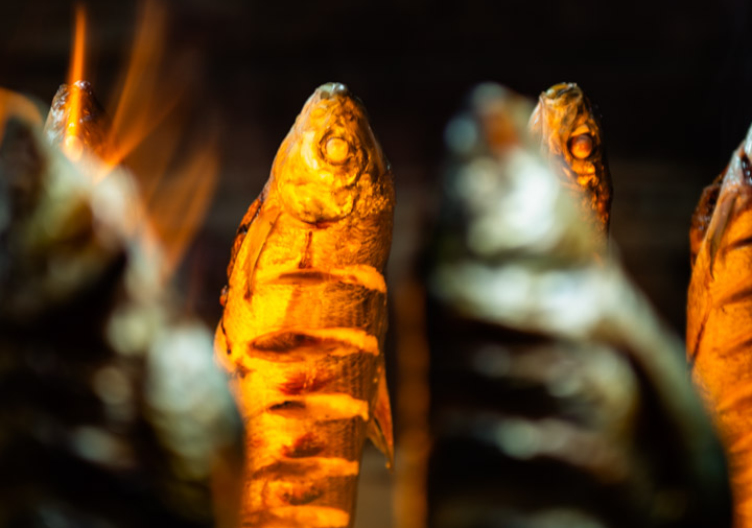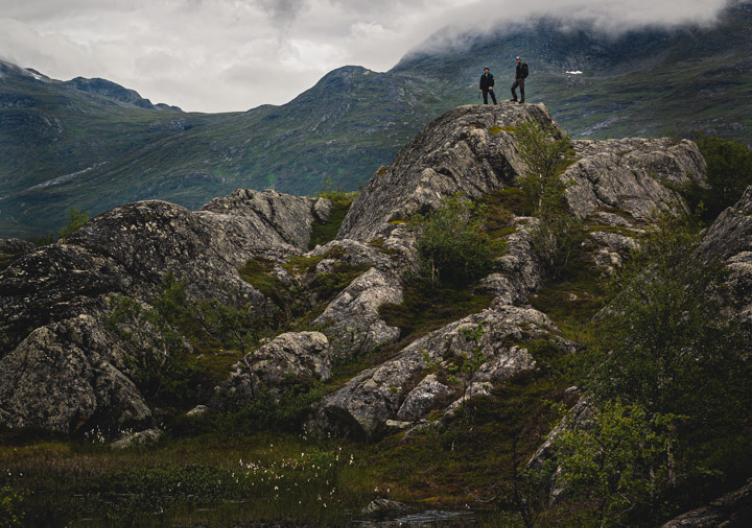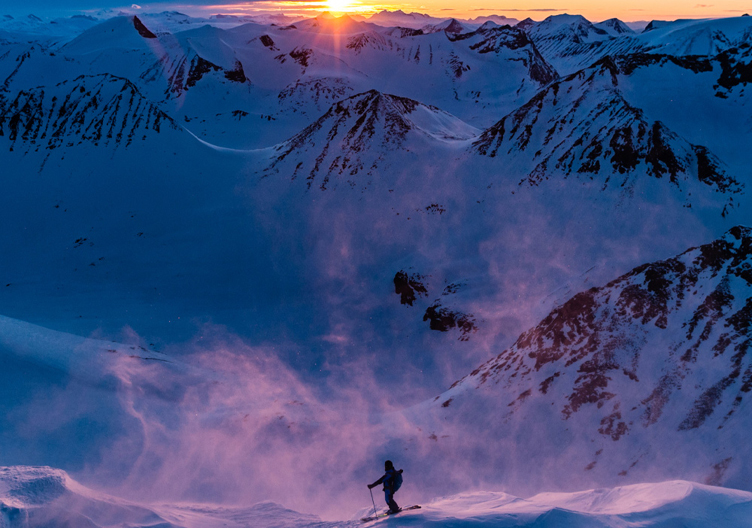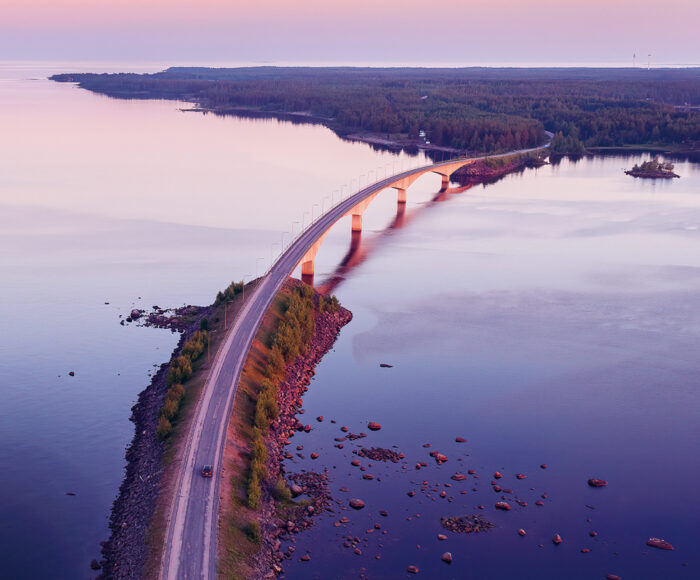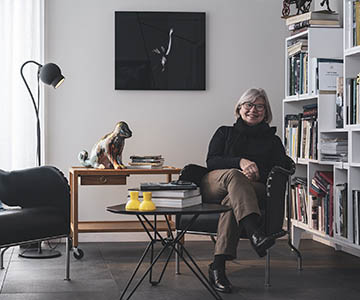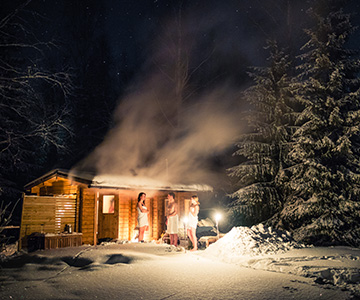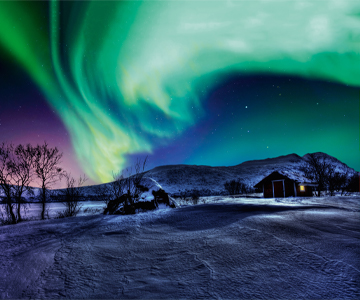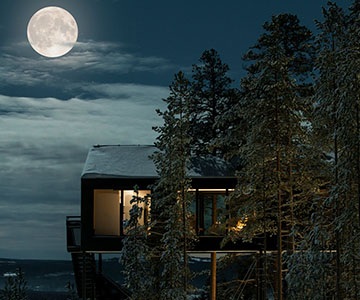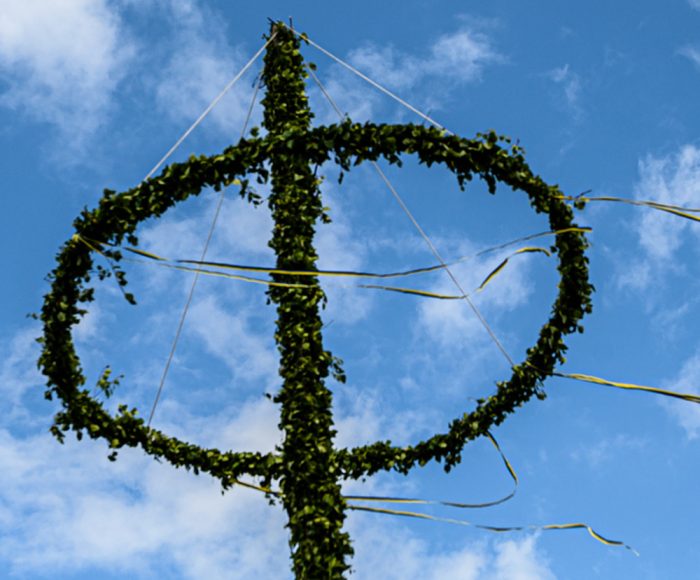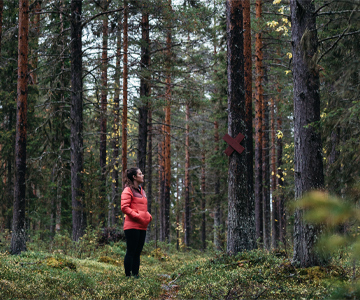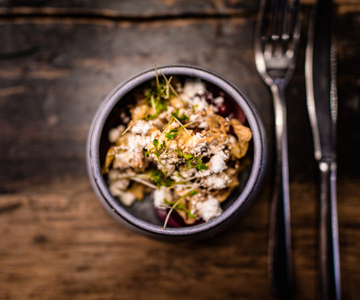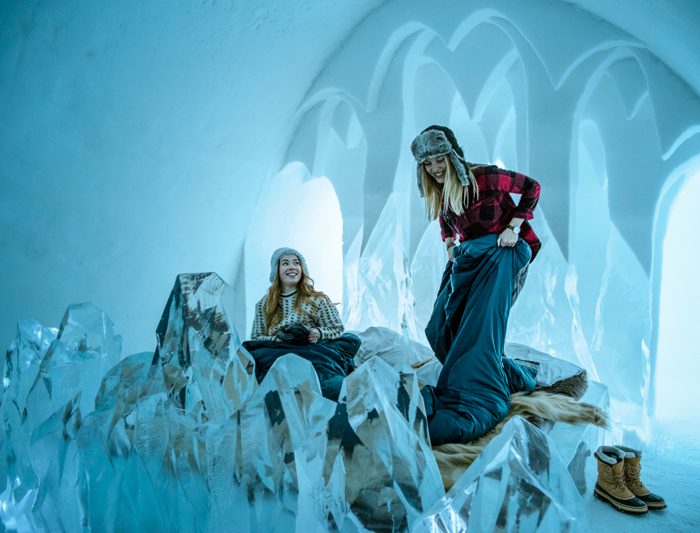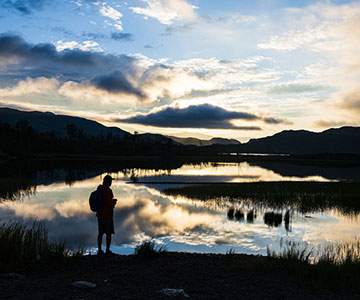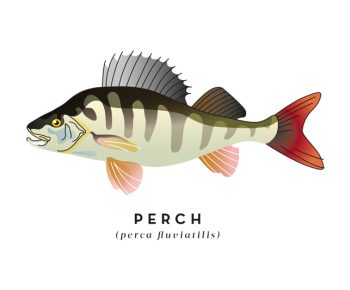On a warm Saturday evening in summer, you turn off road 99 at Luppioberget mountain in Övertorneå. You’ve given yourself 24 hours to do something exciting in a place you’ve never visited. The only preparation beforehand was to book accommodation. But what to do in Övertorneå, now that you’re here?
Evening: Luppioberget has always been a special place for travellers along route 99, the so-called Northern Light Road in the Torne Valley. It used to be a magnificent café and a place to stop along the way. Nowadays it’s also accommodation that in itself is a destination, worth the trip to Lapland View Lodge. You check in and decide when to be back for dinner. You have room 24, almost at the top of the mountain.
The view from your very own cabin is nothing short of glorious. The entire Torne Valley at your feet through the panoramic window. You’re thinking that perhaps you shouldn’t sleep tonight, just stay up and enjoy the midnight sun.
Morning: Before breakfast you head up to the top, to enjoy the 360-degree view. What an exhilarating place. At breakfast, you google options for the day. Driving to Övertorneå itself takes five minutes by car, and that’s how you’ll explore the area today. In town there’s accommodation as well, at Norrsken Lodge and Tornedalen Bed and Breakfast. But you’re thinking to yourself that nothing could be better than this. Then you decide that since you’re in the Torne Valley, why not take the opportunity to visit Finland. The river isn’t seen as a border here, but rather as something that unites. Sweden and Finland are connected. The Torne Valley is two countries, but one place, with its own language and culture. This is where the cultures of Sweden, Finland, the Sami, and the Torne Valley meet.
This is indeed a unique place.
You turn in to OK/Q8 to buy a tall caffe latte from the Starbucks machine, then you drive across the bridge to Finnish Övertorneå, towards the lookout mountain Aavasaksa. The mountain in Övertorneå on the Finnish side is one of the measuring points of Struve’s Meridian Arch, a UNESCO World Heritage. Already back in 1736 the French Academy visited, and Pierre de Maupertuis attempted to establish the curvature of the Earth. Aavasaksa was one of de Maupertuis’ nine measurement sites. On top of Aavasaksa there’s also an exciting building, Keisinmaja, or the Tsar’s hunting lodge, even if the tsar never set foot here as he died before the house was finished. Apart from memorials for the tsar, Struve and Maupertuis there’s also a statue of Annikki Kariniemi here, known as “Finnish Lapland’s first female writer”. An exciting mountain, to say the least.
About Övertorneå
Jump across the Arctic Circle, marvel at the majestic Torne River that runs on the border between Sweden and Finland, and pluck sun ripe berries in the lush forest. Övertorneå is filled with nature experiences and abundant wildlife. Atop Luppioberget you have a vast view of Torne River, Finland, and the woodlands, and if you are lucky, you might spot the king of the forest — the moose.
Have a chat with the local tourist information for more insights heartoflapland.com
Curious about living in Övertorneå?
Check out hejhemby.com
Afternoon: You go back across the border, stopping at the old customs house where Forest Jewel is located these days. You can try your hand at making your own wooden drinking cup here. But since you don’t have a lot of time you settle for buying a wooden cup, then drive to the centre of Övertorneå. Café Arctic Garden serves tasty coffee from their espresso machine, among all the flowers in the shop, and you also take the opportunity to have a light, but late, lunch here.
A dominant building in town, perhaps not because of its size but rather because of its history, is Röda Kvarn (the Red Mill). It was named after its Parisian namesake and this red mill in the Torne Valley has played an important part in celebrations and cultural life around here. It was built using leftover material from the construction of the railway station and the house got its very own style. During the years of military readiness 1936–45 films were screened here from 10 am to 2 am, employing as many as 20 people. Today Röda Kvarn is something you rent for a party, or something to use as backdrop for a selfie.
Another historical building you can see during a stop here is the church from the 18th century. The church organ was sculpted by Mårten Redtmer – who was also involved in the decorations on the warship Vasa. The open-air museum Aunesgården is also a piece of history, and just outside town is the restored church Särkilax. The original church was swept away by an unusually powerful spring flood 400 years ago. Near Särkilax there are a couple of bird towers if you prefer birdsong to preaching, and in town itself you’ll find the Isovaara nature reserve, protected for its natural values and the outdoor recreation it offers. You choose to take a walk along the Art Path today. A number of installations have been made along the embankment of the disused railway. Among other things there’s a neon sign made by Sami artist Carola Grahn that says Kämpa (Fight). You find it as you arrive at Ruskola.
Packing up: You were thinking of leaving but decide to stay for another night. You’ve booked a time slot for the sauna at Luppio. You’re in the Torne Valley after all, a place where sauna is culture and lifeblood. On the other side of the river (in Finland), the sauna culture is considered a World Heritage. The sauna at Luppio has a glass window overlooking a 60-metre-high precipice. It’s an unparalleled sauna experience.
In the evening, the weather is magical. You’re still warm after the sauna and sit out on the terrace having dinner. While having breakfast the next morning, and before you continue your journey, you google what other things you could have done here in Övertorneå. Accommodation and Sami dining experiences in Liehittäjä at Huvva Hideaway sounds exciting. There’s also Arthotel in the village Vitsaniemi to consider. Arthotel, a kind of albergo diffuso in an Arctic context. If you travel north, you just have to stop at the Arctic Circle. You can jump across the abstract line right by the Arctic Circle Monument in the village Juoksengi. In the neighbouring village Svanstein you’ll see Svanstein Lodge and here you can also climb up one of the points of the World Heritage Struve’s Meridian Arch, or perhaps opt for a climb up to the Hollywood-inspired letters above the pink village church. If you’re in the mood for salmon fishing, one of the world’s best salmon rivers runs through this village.



